Already from the square where there is La Union Park in Antigua, i.e., in Old Guatemala, I could partially see the dome of St. Francis the Great Church (Iglesia de San Francisco El Grande) and soon I got to the church itself that has an opulently decorated facade.
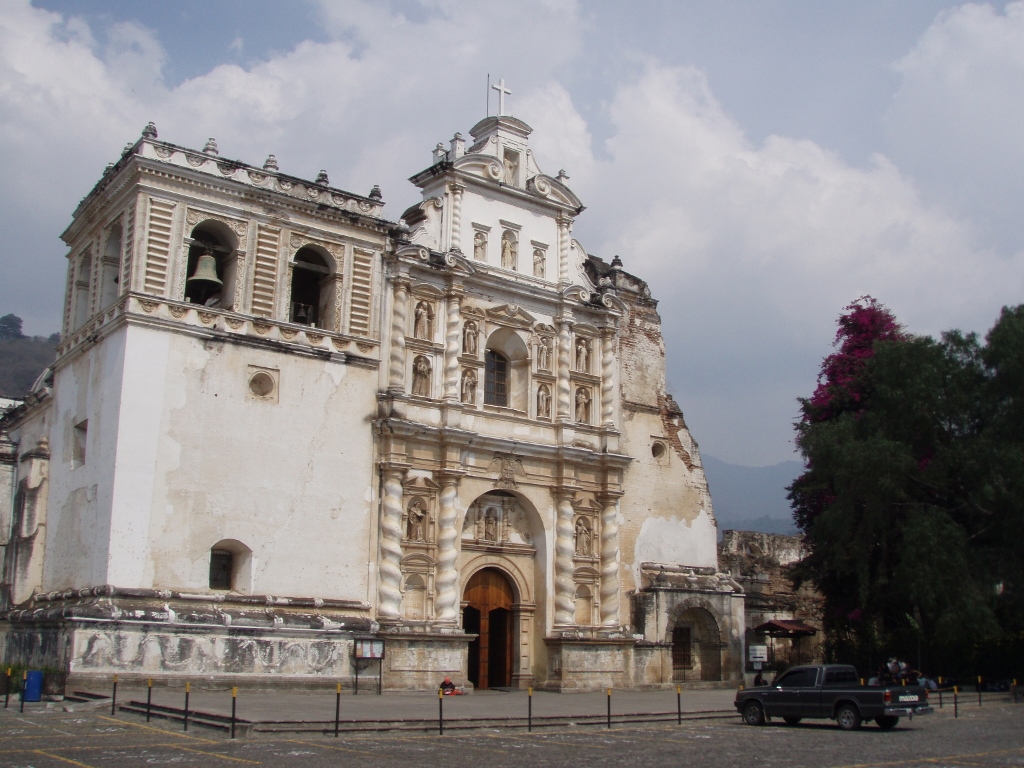 St Francis the Great Church
St Francis the Great Church
The Franciscans chose this place for the construction of their monastery already around the middle of the 16th century and they constantly made some additions to it. Eventually, the church was finished and consecrated in 1702. However, this was all short-lived, for the church was damaged in the earthquakes of 1717, 1751, 1773, 1917 and 1976. What I want to say is that it was seriously demolished in all of these events, but miraculously its stunning facade is still visible, primarily thanks to the large reconstruction of 1960 when reinforced concrete was built into it, so the damage in 1976 was not too big.
This place is very significant for the local population since this is where the Sepulchre of Saint Brother Peter (Sepulcro del Santo Hermano Pedro) is located. It was him who founded a hospital for the poor here and he died at the monastery in 1667. He was canonised in 2002.
In addition to the magnificent front facade, the church is also known for the beauty of its dome. However, from the square in front of the church, one can see only minute parts of the dome.
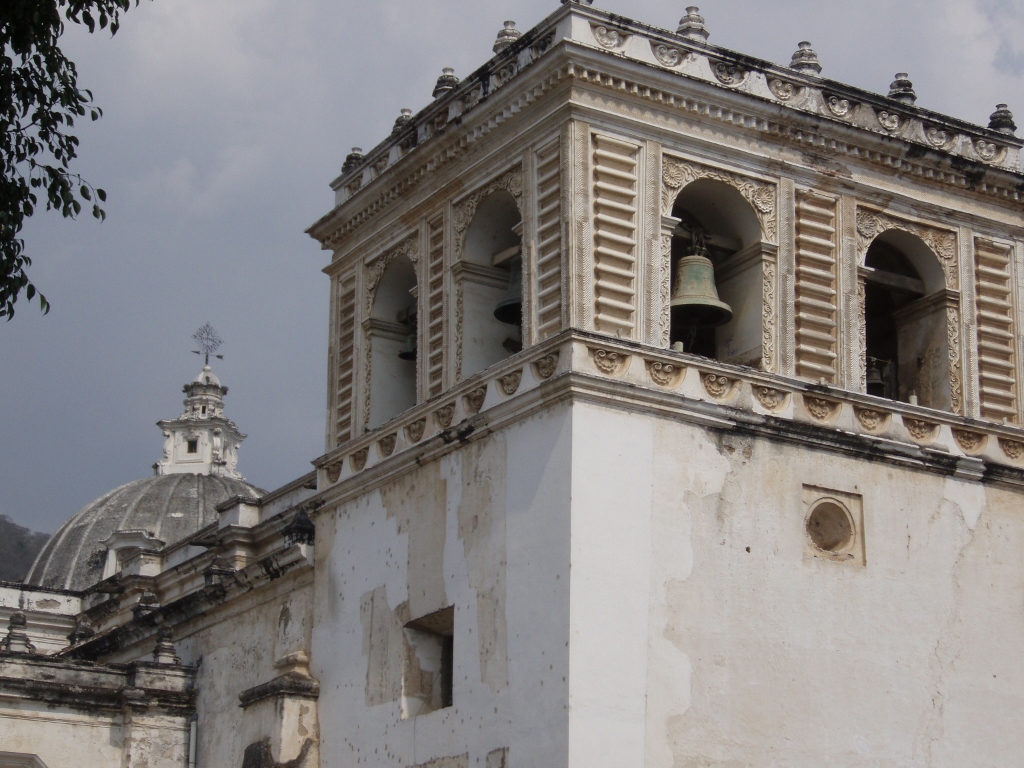 St Francis the Great Church, details
St Francis the Great Church, details
That’s why I went to a side street from where I could see the dome, as well as another one of the gates that lead to the courtyard of the monastery’s complex.
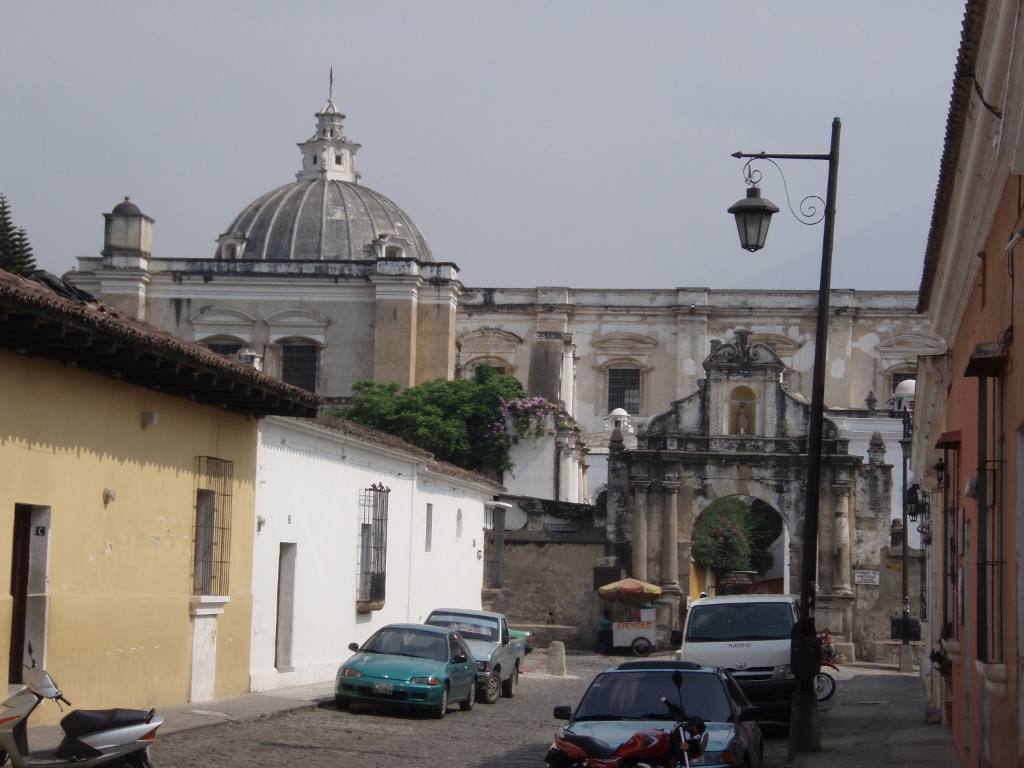 Lateral view at St Francis the Great Church
Lateral view at St Francis the Great Church
Looking for the next monastery on my sightseeing route in Antigua, I got “lost” and reached one of the streets that is somewhat different from the others in terms that there are lawns in front of the houses, as well as a large line of trees here.
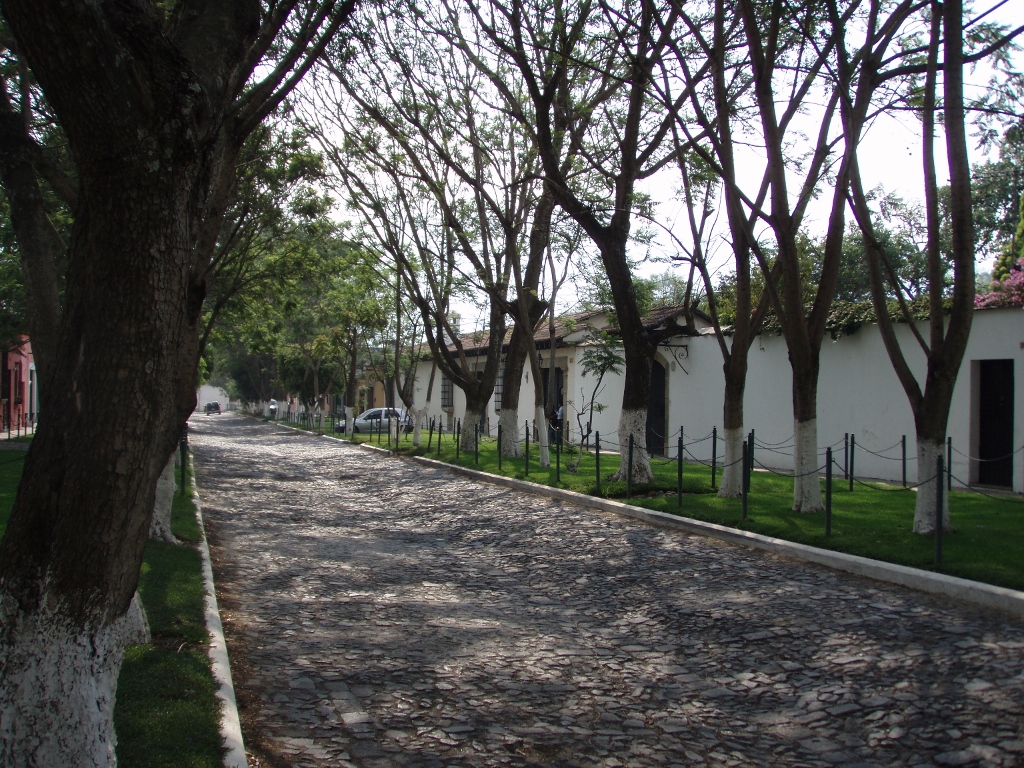 1a Calle Oriente
1a Calle Oriente
Although certainly very beautiful and picturesque, the other streets in Antigua do not display this quantity of greenery.
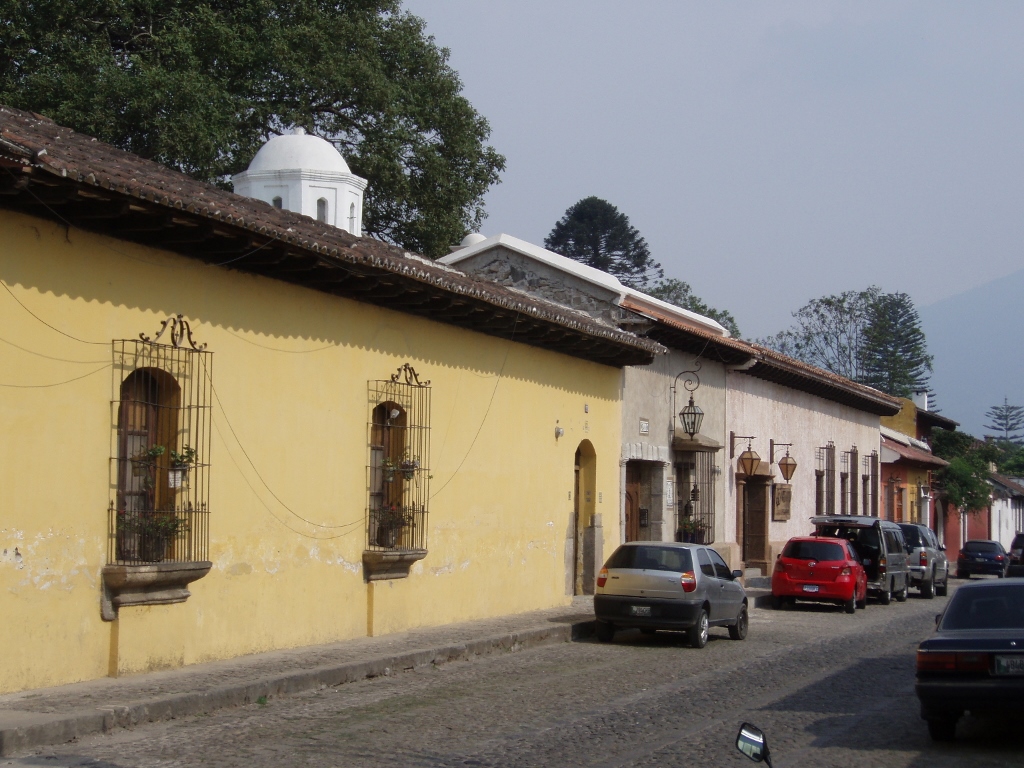 Typical street in Antigua
Typical street in Antigua
Soon I got to the Capuchin Church and Convent (Iglesia y Convento de las Capuchinas). The monastery was founded in 1736 by nuns from the Capuchin order who came here from Spain.
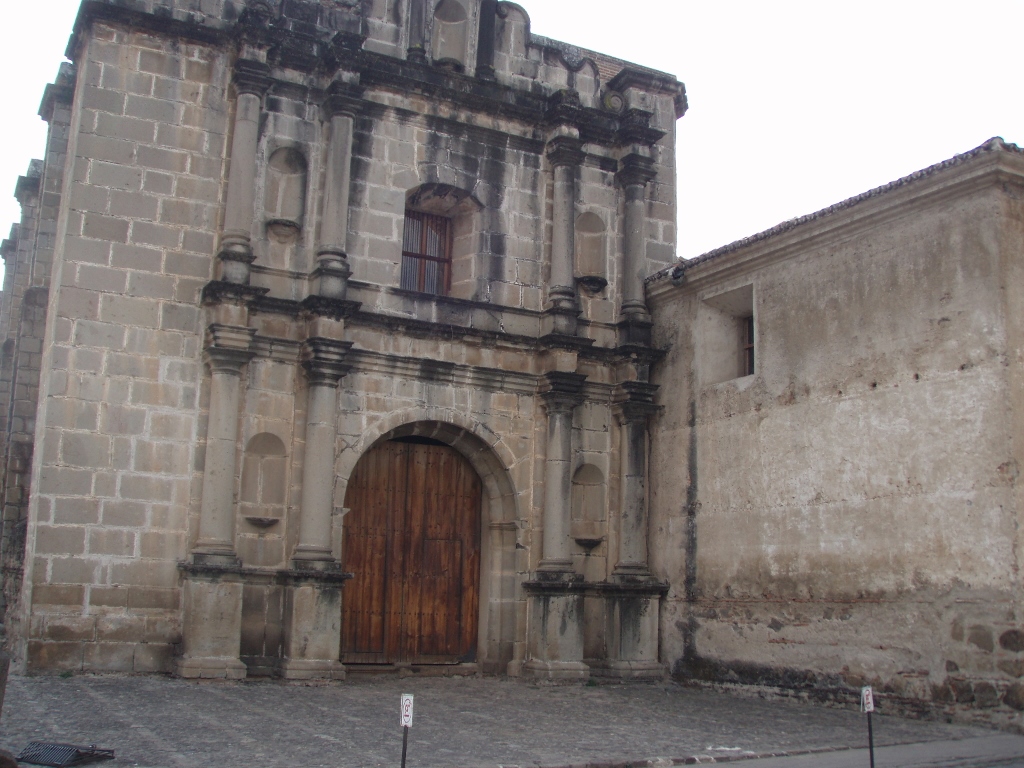 Capuchin Church and Convent
Capuchin Church and Convent
Both the monastery and the church are in (well maintained) ruins, but although my guidebook spoke highly of this place I decided again not to enter. I have even kept in my travel diary the reasons for such a decision. Namely, back in 2008, they asked for 3.5 USD for entrance and 45 USD for taking photos inside. I don’t know what the situation is like now, but for me, with my limited budget on this journey, this was simply unacceptable. The price of the ticket itself is not that high, but if you take into consideration that there are over a dozen places in Antigua that are a “must” in terms of visits, it becomes clear that a thorough visit to Antigua is not cheap.
So, I just turned around and continued to roam around Antigua for free, i.e., looking at it from the outside. I cannot speak of these ruins, but even ordinary houses I was seeing in the town or its cobbled streets were not uninteresting and they certainly had some charm of their own.
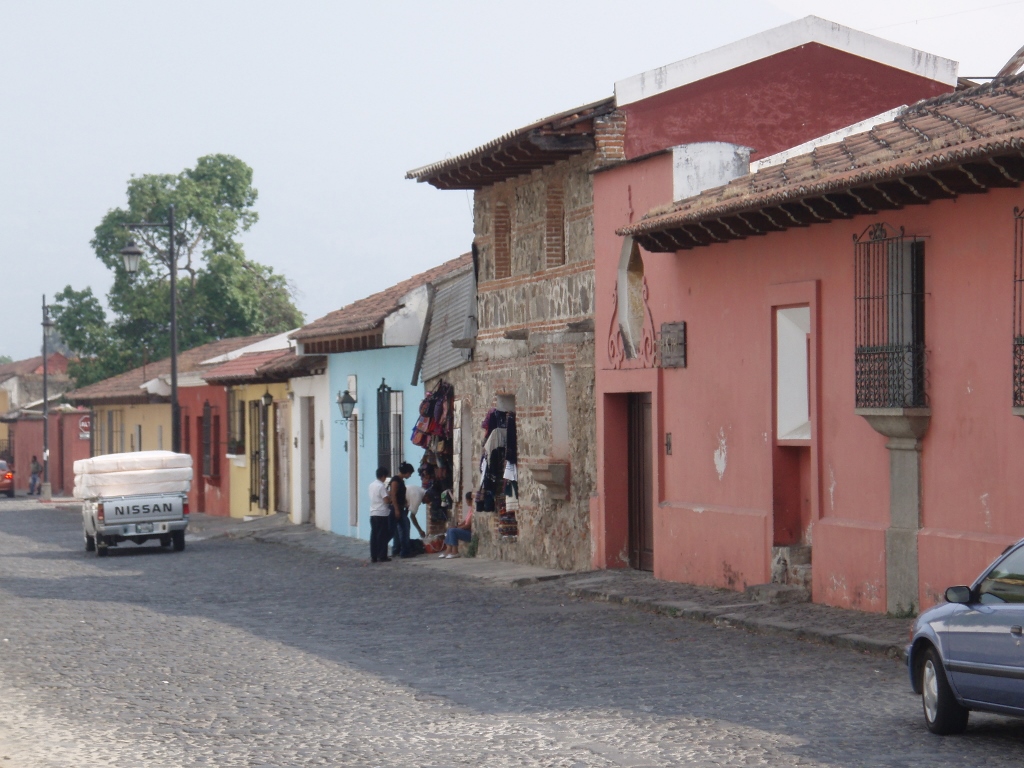 Ordinary street and ordinary houses in Antigua
Ordinary street and ordinary houses in Antigua
The next was the Church of Our Lady of Carmel (Iglesia de Nuestra Señora del Carmen). The beginnings of this church date back to the 17th century. The original church was demolished by the earthquakes of the 17th century, but the people kept restoring it, several times at that, until the 18th century. The last time the church was completely restored was in 1728. After the 1773 earthquake, there were no more restorations. Still, what has survived to date, and here I’m primarily thinking of the exquisitely opulent facade, is magnificent.
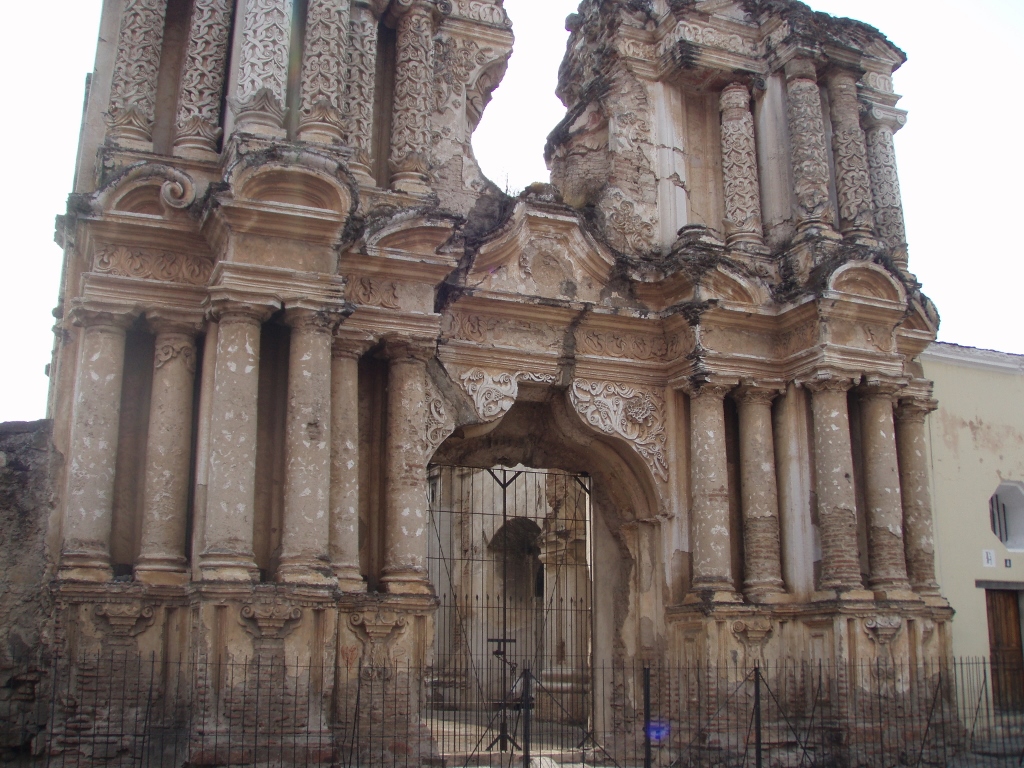 Church of Our Lady of Carmel
Church of Our Lady of Carmel
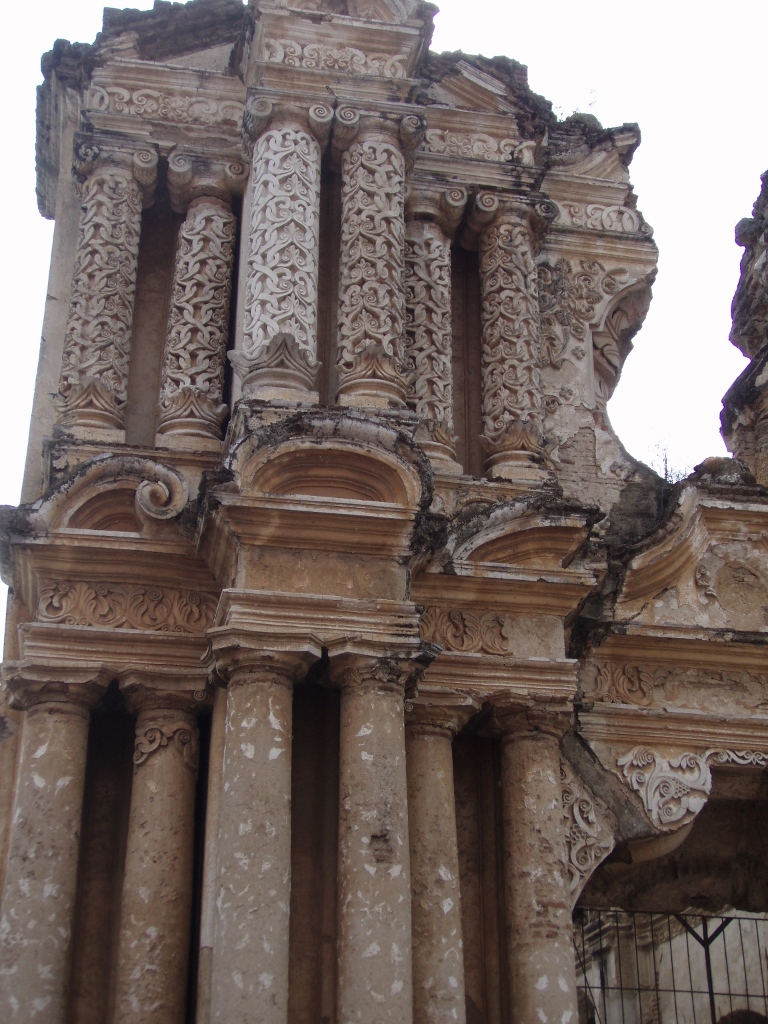 Church of Our Lady of Carmel
Church of Our Lady of Carmel
The decoration of the church was inspired by the Mudéjar style and it is also interesting that there are no religious depictions on its facade. Admittedly, in the central niche there used to be a depiction of Our Lady of Carmel, but it was destroyed in the 1976 earthquake. On the other hand, it is presumed that the pillars that adorn its front facade (four groups with six pillars) symbolise 24 elders who appeared in one of the visions of St. John the Apostle.
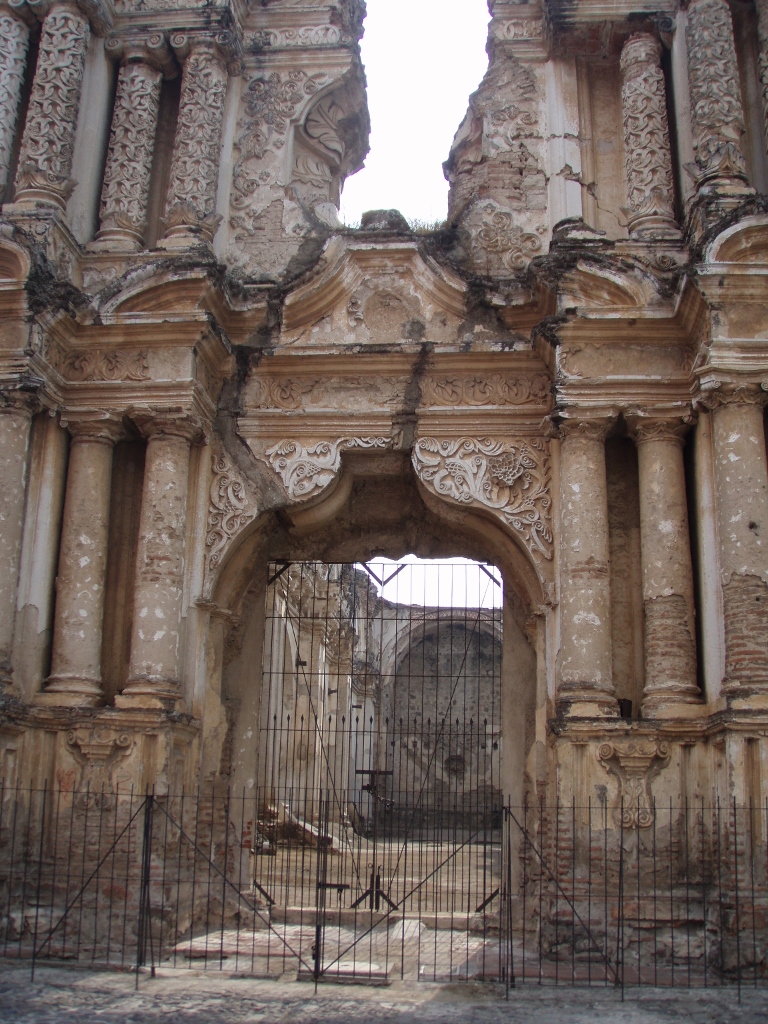 Church of Our Lady of Carmel
Church of Our Lady of Carmel
After this I walked to one of the symbols of Antigua. This is Santa Catalina Arch (El Arco de Santa Catalina).
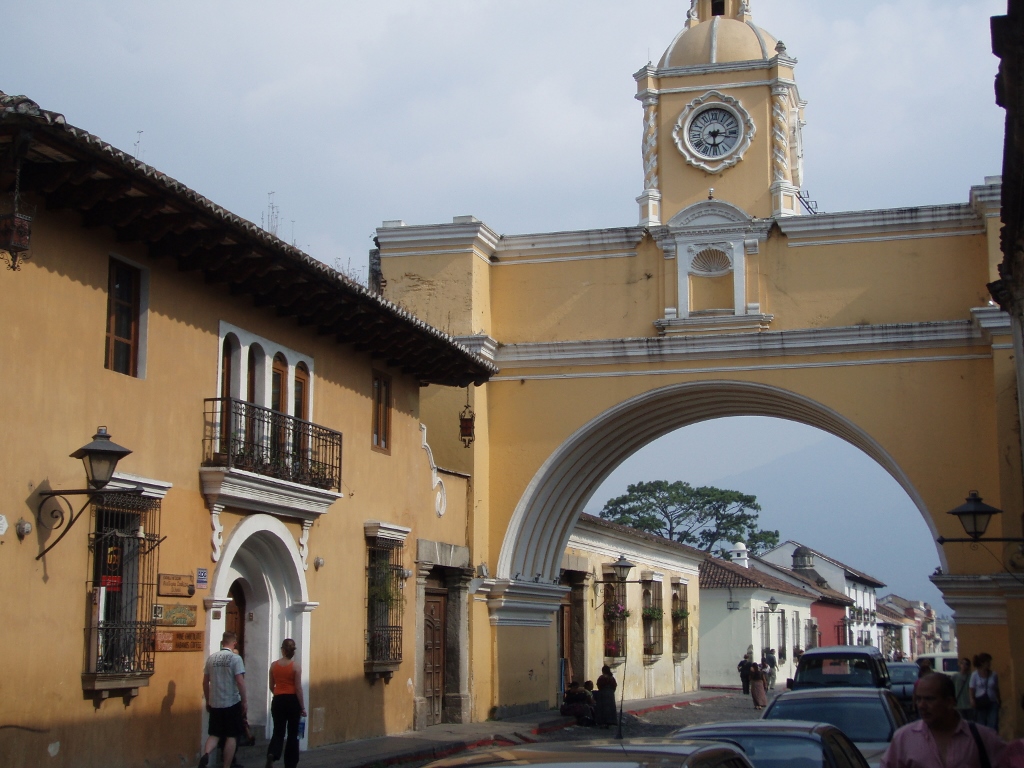 Santa Catalina Arch
Santa Catalina Arch
This is in fact a closed bridge that linked the Convent of Santa Catalina and a garden that used to exist on the other side of the street allowing the nuns to go there without getting out into the street. (In many convents, female monasteries, particularly those belonging to stricter orders, the nuns are prohibited from having any contact with the outside world.) The bridge was built in 1693 and the clock was added in the 1830s.
This arch is one of the most photographed structures in Antigua and the reason for that is not linked to history or architecture, but rather to its position. Namely, when the weather is fair, below the bridge, it is possible to see nicely the cone of Agua volcano in the distance. When I was in Antigua, it was sunny, but the sky was not particularly clear and there was something like a thin layer of mist. Still, although pale, the slopes of the volcano can be discerned in the photo below.
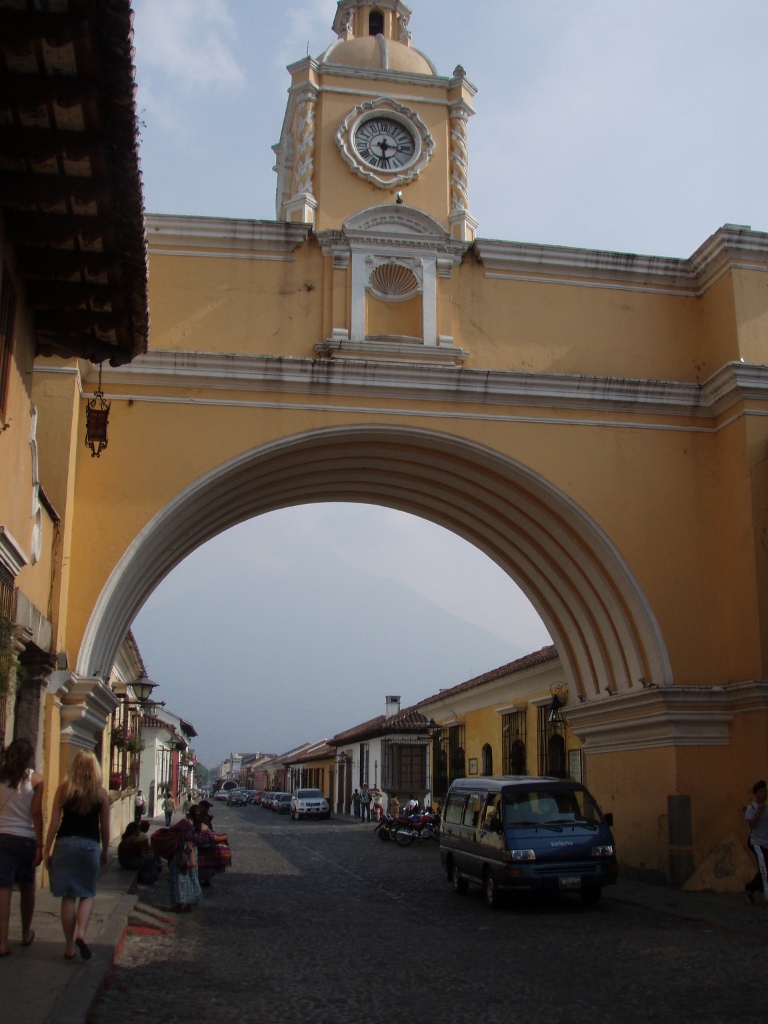 Slopes of Agua volcano as a background for Santa Catalina Arch
Slopes of Agua volcano as a background for Santa Catalina Arch
While I was standing there taking photos, I was approached by a local woman who offered me some goods she was selling to tourists. I was not interested and since I still had a photo-camera in my hands, she quickly turned her back to me and moved away.
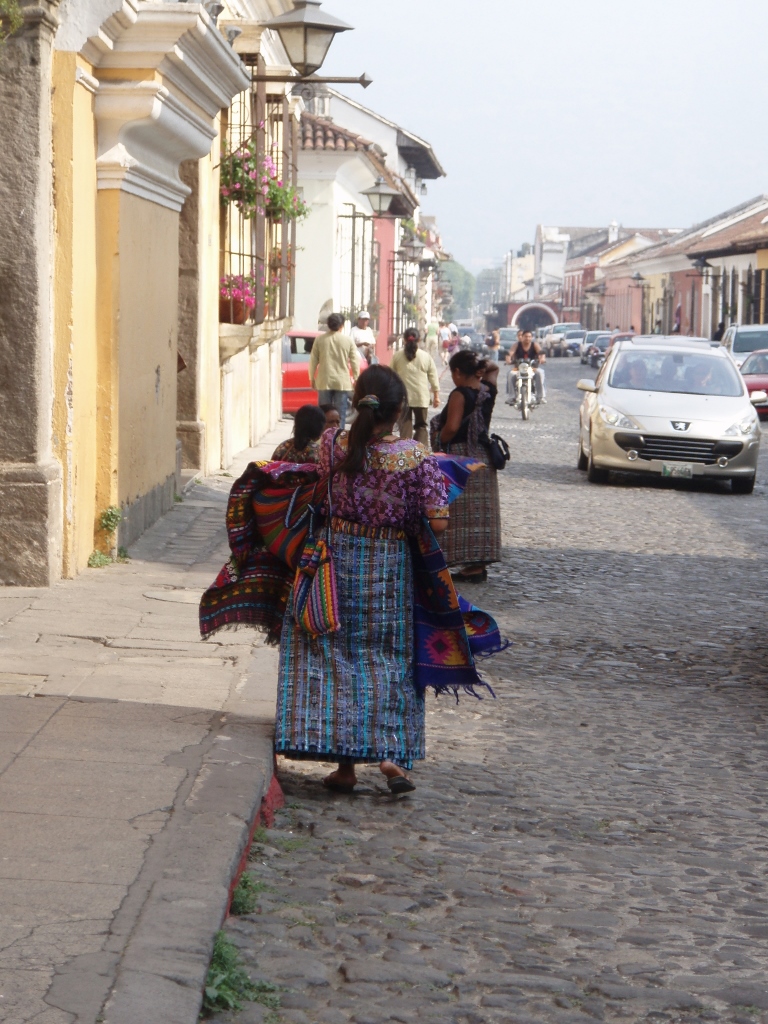 No sale today
No sale today
I followed her, but not because I changed up my mind, but in order to look at Santa Catalina Arch from the other side as well. The arch is practically the same, but the view is somewhat different.
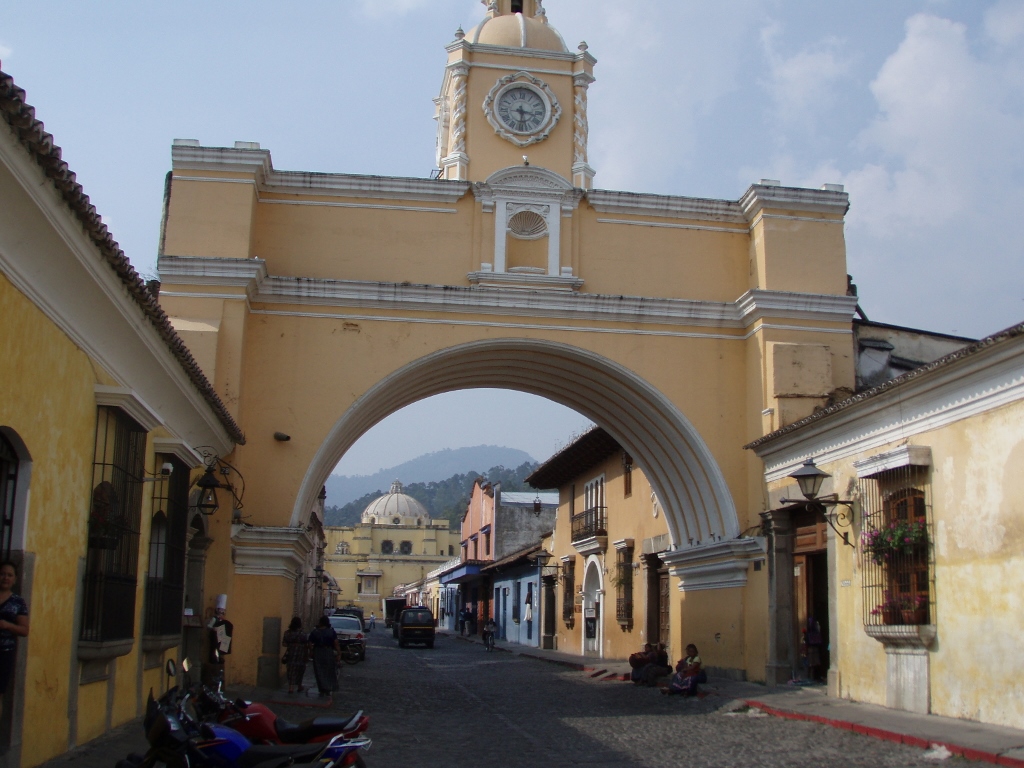 Santa Catalina Arch and La Merced Church
Santa Catalina Arch and La Merced Church
Behind the arch I could see now parts of the convent and La Merced Church, which means the Mercy Church being derived from Our Lady of Mercy. In any case, everybody calls it simply La Merced Church (Iglesia de La Merced).
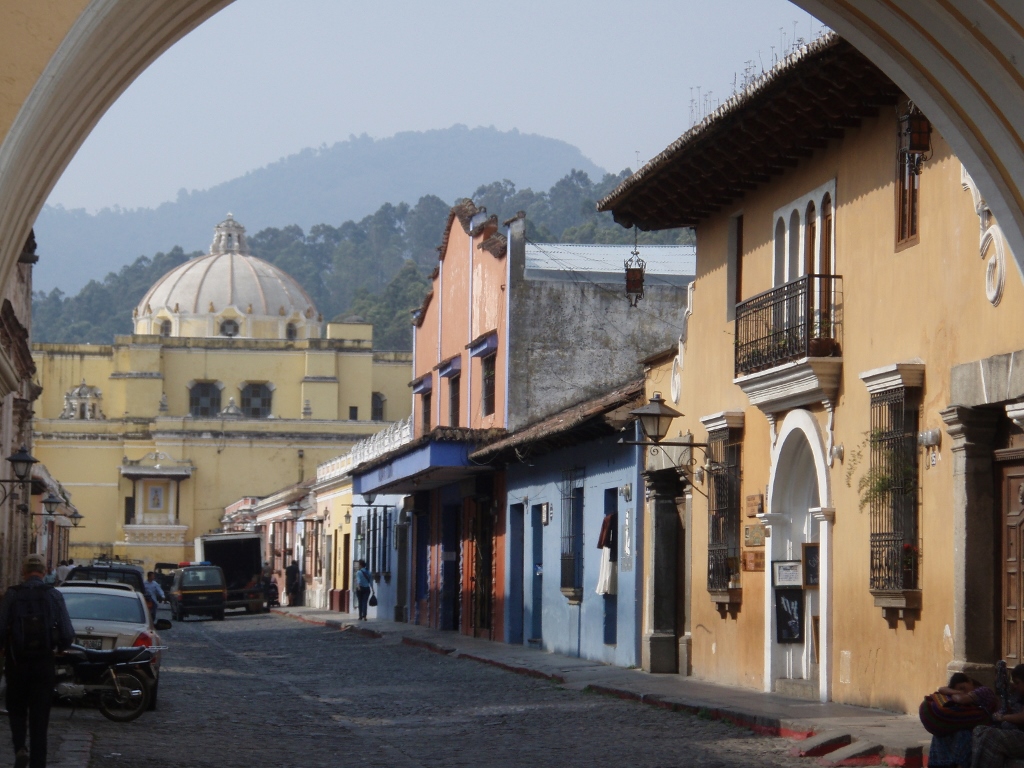 La Merced Church at the end of the street
La Merced Church at the end of the street
On my way to La Merced Church I also passed by one of the older houses that has exceptionally beautiful eaves. What I want to say is that no matter how impressive the churches are, even the “ordinary” houses in Antigua are not lagging behind by their beauty and picturesqueness.
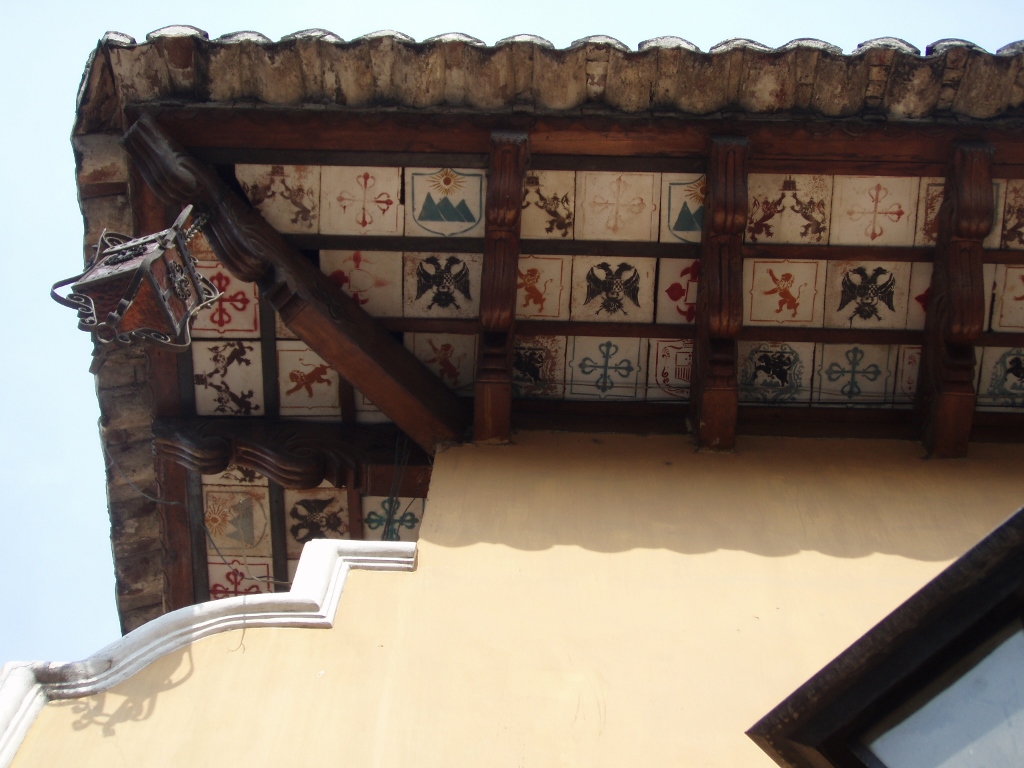 Eaves of an “ordinary” house in Antigua
Eaves of an “ordinary” house in Antigua
A little later I also passed by a hotel which I don’t want to advertise, but the entrance into the house which is a part of the hotel is adorned by incredibly stunning and impressive stone decoration. And this is not a unique case in Antigua.
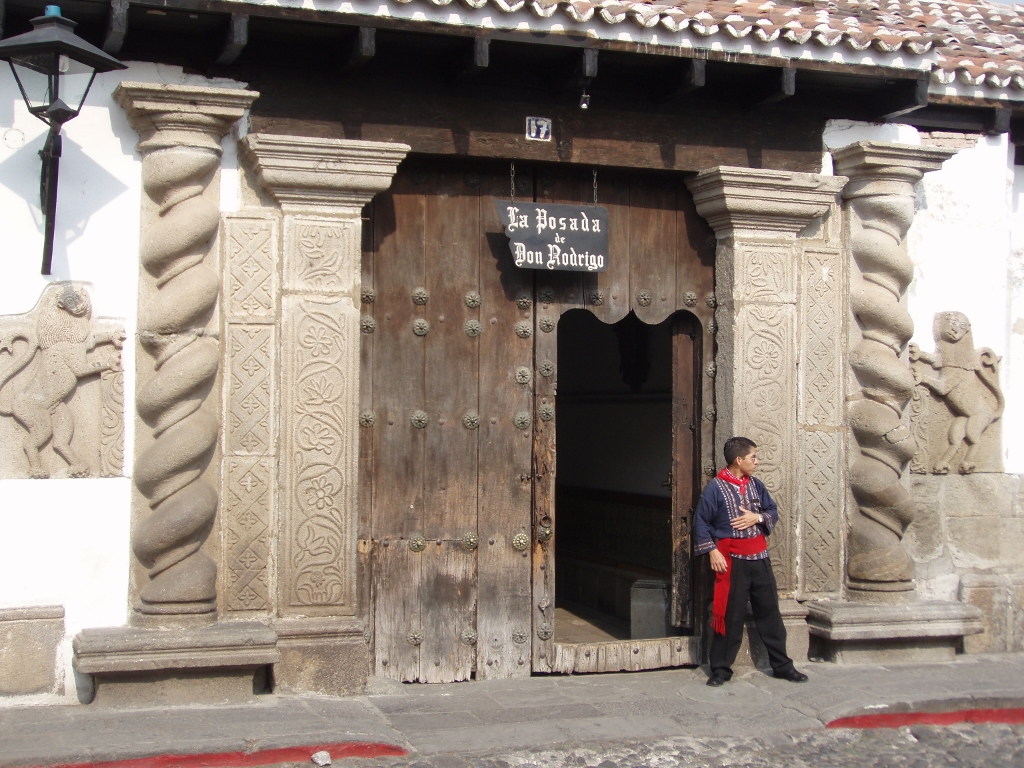 Opulent stone decoration at the entrance into an “ordinary” hotel
Opulent stone decoration at the entrance into an “ordinary” hotel
In any case, after Santa Catalina Arch I headed for the La Merced Church. The construction of a convent in this place started already in 1548, but like in the case of the other structures, the earthquakes kept damaging the buildings and the people kept restoring them. Then the church was completely demolished in the earthquakes of the first half of the 18th century, so the construction of the new one started in 1751 and was completed in 1767. Soon after there was that infamous earthquake of 1773 and the convent was destroyed. The church was reconstructed around the middle of the 19th century and the facade that can be seen today comes from this period.
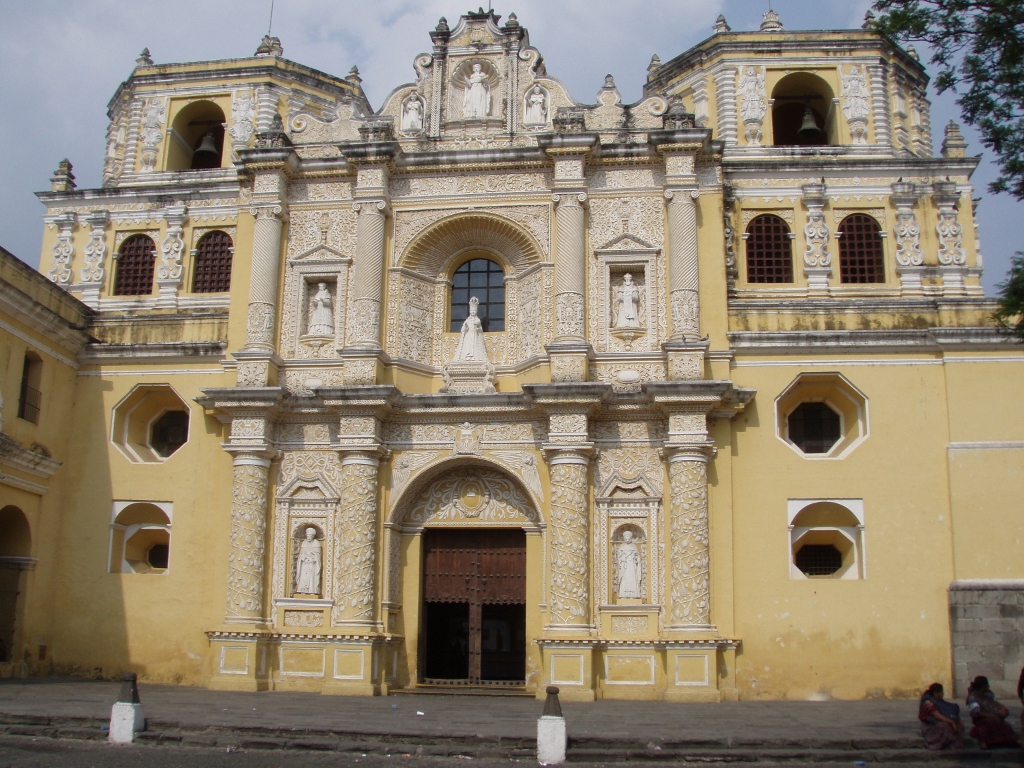 La Merced Church
La Merced Church
Because of its striking appearance and the richly decorated facade that is reminiscent of an opulently decorated cake, as the most commanding legacy from the colonial period, La Merced Church is yet another of the symbols of Antigua. In contrast to the front facade, the interior of the church is rather modest and unassuming, while the ruins of the convent can still be visited today. Again, I did not go there, but opted instead to watch the local women who were selling artisanal goods to tourists, while they themselves and in particular their colourful clothes were much more interesting to me.
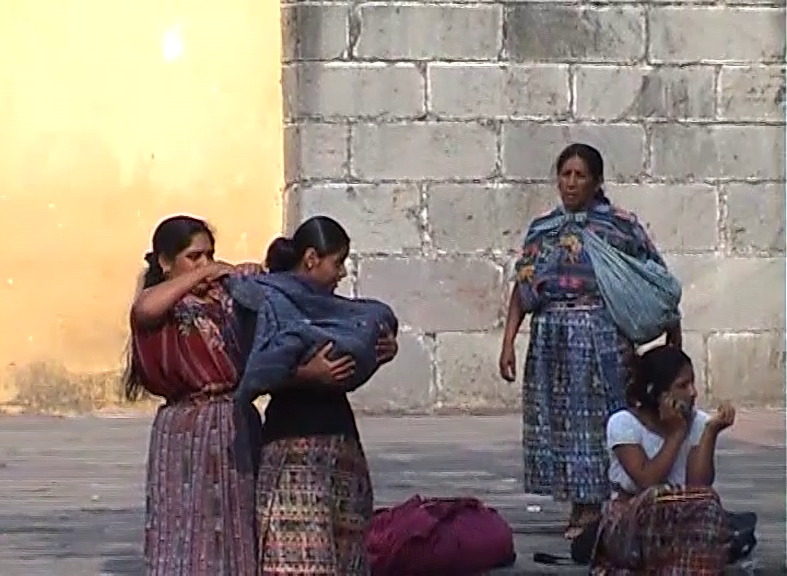 Sellers of artisanal goods in front of La Merced Church
Sellers of artisanal goods in front of La Merced Church
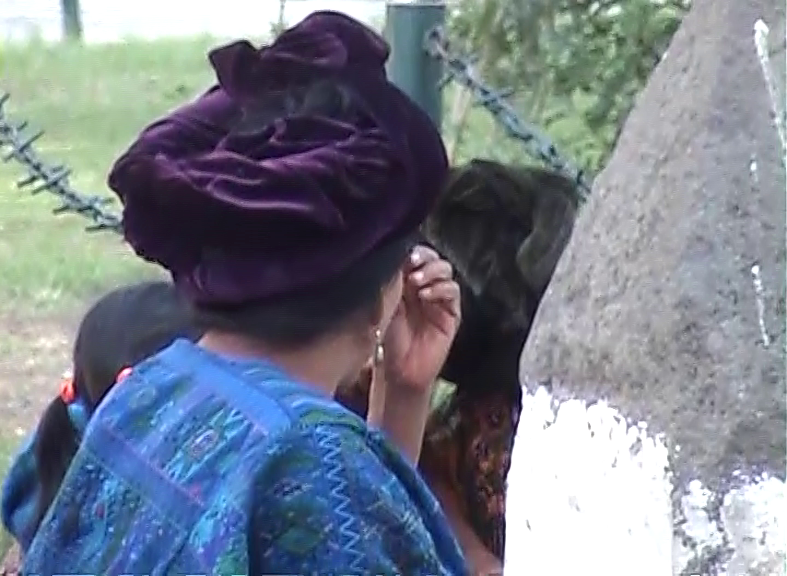 Picturesque “hat” and the exceptionally beautiful fabric used for the clothes of this elegant woman
Picturesque “hat” and the exceptionally beautiful fabric used for the clothes of this elegant woman
After almost two hours of non-stop walk around Antigua I realised I was tired and decided to bring my sightseeing of this incredible town to an end. My visit to Antigua was efficient and productive, but I was left with an impression that it was not sufficient. Also, I think that my photographs do not convey even a fraction of the true beauty of the town and I believe that it would be an excellent thing to stay here at least for 2-3 days and see everything at ease and leisurely, while enjoying pleasant breaks in the meantime.
But, once I decided I would no longer do any more sightseeing, I also realised I was hungry. Thus I figured I would go to have an early dinner later, but to start with I sat at a café which is located at the main square opposite the Cathedral. In fact, I took my seat in an exceptionally pretty courtyard belonging to the café that can be reached by walking through something that looked like a library to me.
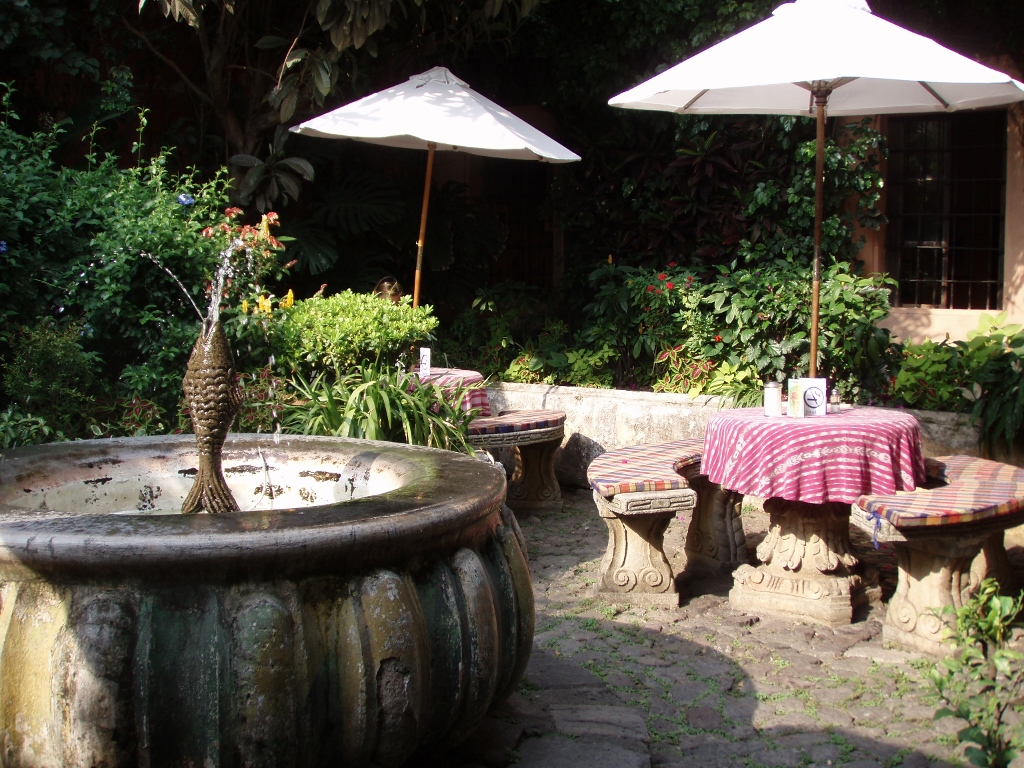 Café’s courtyard
Café’s courtyard
I decided to try Tres Leches cake and it was the first time for me to try this cake that has meanwhile become well known even in my own country. My impression of the cake was that it was a little harder version of Koch, the semolina sponge cake, over which they put whipped cream and some cinnamon.
In addition, I immediately ordered “traditional hot chocolate with milk.” I was thinking that I was in Guatemala, so let’s have more chocolate and less coffee.
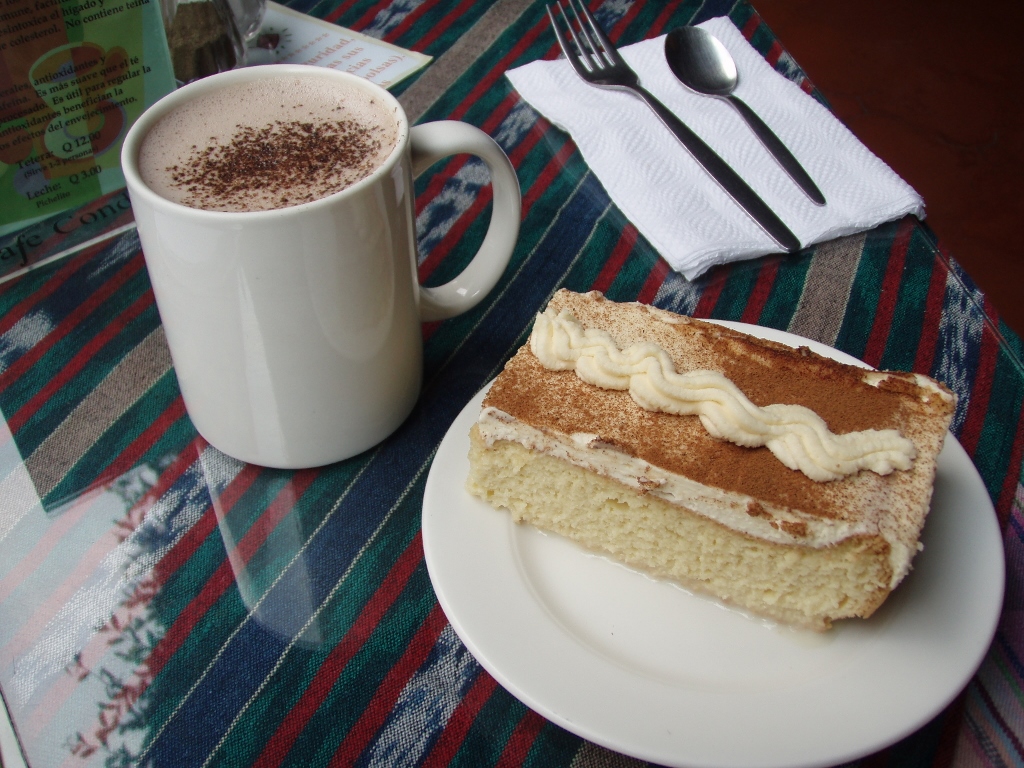 Traditional hot chocolate and Tres Leches cake
Traditional hot chocolate and Tres Leches cake
I personally don’t have any problems eating sweets first and dinner later, but since I was very hungry I ate and drank what I had ordered a little faster. And then there was a problem. By the time I realised this was all far too sweet even for me, it was too late and I felt slightly nauseated from all this sugar. I generally have a sweet tooth, but even for me this was too much. So, I sat there for a while and then with a very pronounced feeling of weight in my stomach I went to the terminal in order to catch a bus to Guatemala City. There was no way I could eat anything else here.
When I got back to Guatemala City, I dealt a little with the issue concerning the continuation of my journey for I planned to transfer to San Salvador, the capital of El Salvador, the next day, but I did not have a ticket yet. Still, there was nothing I could actually do that evening, so I just checked my emails at the hotel and read the guidebook I had.
There is a slight, but also quite a serious problem when you travel around Central America, especially when you travel alone. This is the question of – security. All of these countries are, unfortunately, famous for a very high crime rate, probably encouraged by great poverty and perhaps also by certain habits. While I was on the buses where I often chatted with the local co-passengers (during the entire journey, I didn’t see a single other foreigner on the chicken buses I took; I was the only one) I was regularly asked if I was not afraid to travel alone. I would always tell them that on the one hand I was very careful and on the other why anybody would want to do me any harm. At such statement of mine these local people looked at me incredulously, thinking probably that I was blessedly unaware of the local customs. Namely, these wonderful co-passengers of mine regularly advised me, and this is also something emphasised in my guidebook, not to venture outside once the night falls for it was absolutely not safe! I was completely clearly and visibly a foreigner, to start with I was seriously taller than all of them, and whether I had a lot of money and whether I had it on me had nothing to do with it. It was absolutely not safe to go out in the streets at night since this was the time when the crime ruled.
But, when I say that security was still a “slight” problem, I’m thinking precisely that this problem can be avoided and that was what I was doing all the time. How? Simply I did not got out when it was dark.
And so I constantly said to my worrying co-passengers that I didn’t know what they were like in the evening or at night, but during the day they were all perfectly kind, forthcoming and very good hosts. And they were glad to hear it.